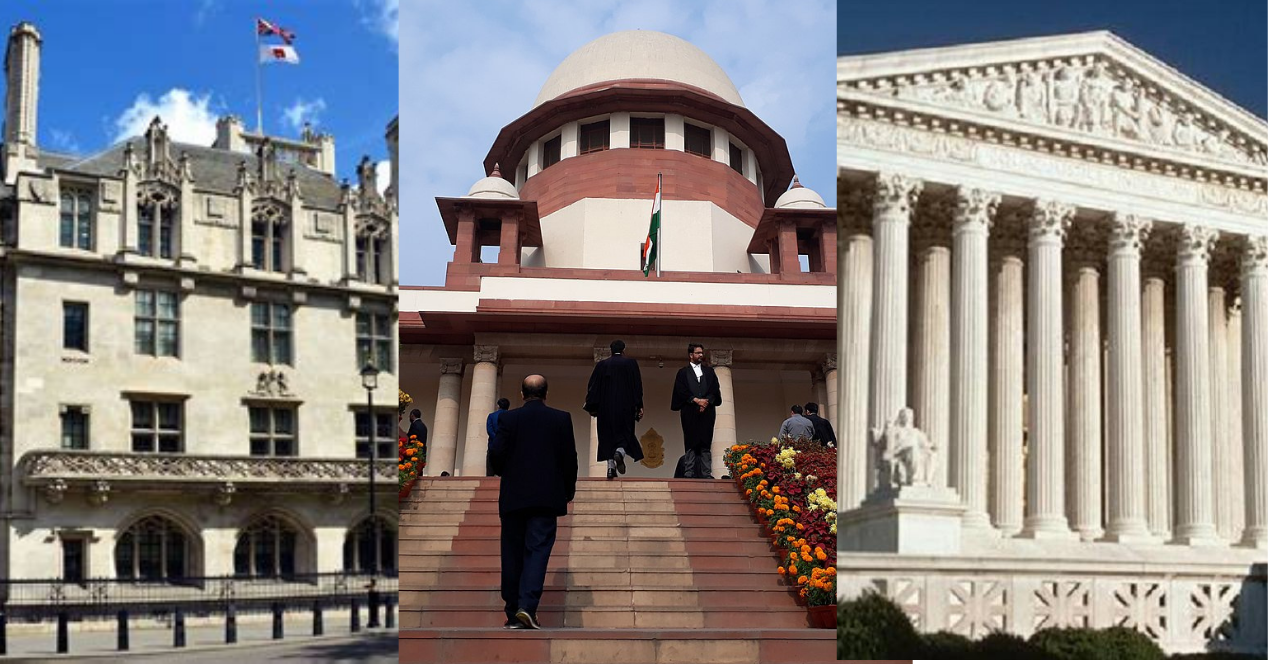Analysis
How Do Supreme Courts Choose Their Cases?
The Indian Supreme Court is famous for its large docket, while the US Supreme Court is known selective. The UK has an Appeals Panel.

The Supreme Court of India (SCI) is infamous for its large caseload. The court’s docket is shaped by the scope of its jurisdiction and the manner in which it exercises its jurisdiction. The jurisdiction of the Supreme Court is set out in the Constitution and in some statutes and is not open to frequent amendment. However, the manner in which a court exercises its jurisdiction is largely shaped by the court itself.
In this post we focus on the Court’s procedural approach to admitting or rejecting courses filed before it. We compare how the Indian Supreme Court conducts admission hearings with the procedure followed by the UK and US Supreme Courts.
Let’s begin with the Supreme Court of the United States (SCOTUS) as it is arguably the most selective court. Appellants who wish to take a case to SCOTUS must request a ‘writ of certiorari’, which is filed as a written application. The Court then sits for a ‘conference’, where they discuss which writs of certiorari (‘certs’) they will grant for a hearing. Out of the nine SCOTUS Justices, at least four must agree to hear a case. Out of more than 7,000 petitions that SCOTUS receives in a year, they invariably hear about 100-150.
The Supreme Court of the United Kingdom (UKSC) follows a different procedure. In the UKSC either a lower court, or the UKSC itself, must certify whether a case is fit for appeal. If the lower court has not certified an appeal, an Appeal Panel of at least three UKSC judges consider applications in Chambers to decide whether an issue is important enough to require the UKSC’s consideration.
The Supreme Court of India (SCI) procedure is similar to that of the UKSC. High Courts may grant certificates when a case is fit for appeal. In some criminal cases, there is an automatic right to appeal when the accused has received a higher sentence in the High Court. However, certificate cases are only a small part of the Court’s caseload.
The largest portion of the Court’s docket deals with ‘special leave to appeal’ petitions (SLPs). SLPs are a request for the SCI to hear cases even if the High Court has not granted a certificate.
In addition to this, the SCI also has an ‘original’ jurisdiction. Here, unlike the UKSC and SCOTUS, the Court hears cases that haven’t been heard by a lower court before. The SCI receives a large number of original petitions claiming a violation of fundamental rights (known as ‘writ petitions’), among other things.
Unlike SCOTUS and the UKSC, the SCI does not decide on the admission of SLPs or WPs in chambers. Instead it conducts admission hearings in open court, after hearing oral arguments by lawyers. Monday and Friday each week is reserved for admission hearings effectively reducing the court’s work week to 3 days.
The vast jurisdiction of the SCI, and its open procedure for selecting cases, means that SCI has a much larger workload than other apex courts. Despite the Court having a strength much larger than the UKSC or SCOTUS (34 compared to 9 and 12 respectively), its pendency continues to rise. It has allowed the admission process to become a financially lucrative arena for advocates – a special interest group that has no vested interest in reducing the pendency before the Supreme Court.
